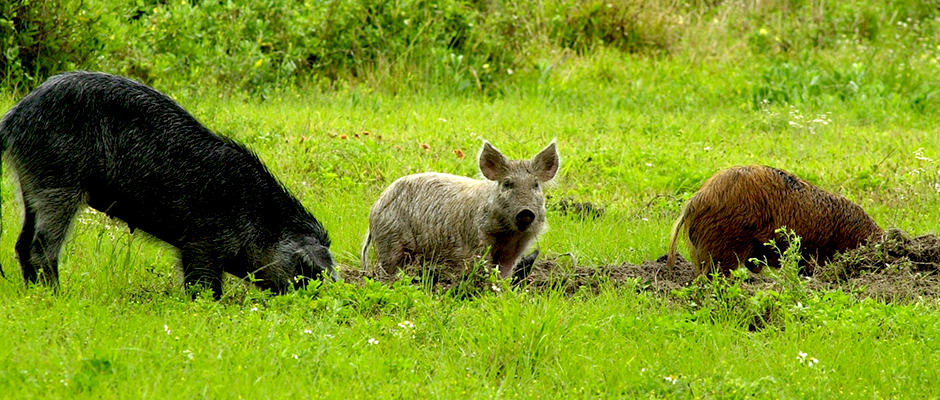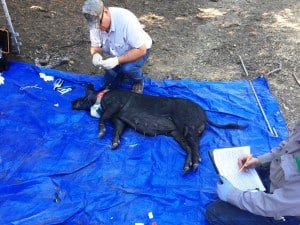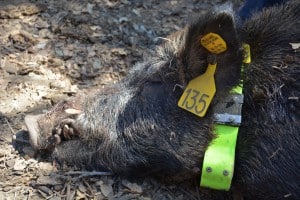Share this article
Feral Swine in California – Research, Disease, and Management
Feral swine (also known as wild pigs), numbering more than six million in more than 35 states, cause damage to agriculture, natural resources, and property ranging from sacred Tribal sites and critical wildlife habitat to golf courses and suburban lawns. They are known carriers of diseases and parasites that can infect people, livestock, pets and other wildlife. In California, feral swine/wild pigs have been classified for decades as a game mammal through legislative action. In cooperation with many partners, feral swine are monitored and managed to minimize their negative impacts.
Tejon Research Partnership: The 270,000-acre Tejon Ranch is the largest contiguous piece of private ground in California. Established in 1843, this working cattle ranch is a California landmark with a rich history of conservation and stewardship. The Tejon Ranch Conservancy works to protect, enhance, and restore the native biodiversity and ecosystem of the ranch and surrounding Tehachapi range, home to more than 60 at-risk species. This unique biologically diverse area lays where four major biogeographic regions converge and California condors fly overhead. The Conservancy is partnering with USDA Animal and Plant Health Inspection Service’s Veterinary Services, Wildlife Services, and National Wildlife Research Center, as well as Conservation Science Partners, on a three-year study to determine population densities, impacts to wildlife communities, and agricultural damage caused by feral swine. Undertaken with support of the California Department of Fish and Wildlife (CDFW), the project received funding through Wildlife Services’ National Feral Swine Damage Management Program. In the initial two weeks of trapping, Wildlife Services personnel radio collared eight feral swine and placed ear-tags and neck bands on an additional 32.
Feral Swine Disease Surveillance: As part of an ongoing national disease surveillance effort on the more than 30 diseases that feral swine can transmit to people, pets and agriculture, Wildlife Services in California samples a subset of feral swine removed during depredation activities. Recently, sampling found feral swine that were exposed to pseudorabies virus in counties where the disease has not previously been reported in the species. (The pseudorabies virus was eradicated from the U.S. commercial swine herd through a vaccination program.) Pseudorabies can be carried by healthy-looking feral swine and transmitted to livestock and pets through contact with an infected animal’s bodily fluids/feces or by eating infected meat. While not a human health concern, this virus can infect and kill pets and potentially impact wildlife such as large carnivores. Local officials are directing people to leash pets in areas where feral swine may roam and encouraging people who suspect a pet has had contact with feral swine or eaten raw feral swine meat to contact their veterinarian.
San Diego Eradication Project: Wildlife Services in California is working with a multi-agency group that includes several tribal entities, U.S. Forest Service, Bureau of Land Management, San Diego County Parks, San Diego Public Utilities, California State Parks, and CDFW to reduce the negative impacts of feral swine to agriculture, natural resources, property, animal health, and human health in San Diego County. The goal is to eradicate feral swine in San Diego County protecting over $1.7 billion dollars of agriculture, eliminating damage to environmentally sensitive areas, and removing the possibility of feral swine introducing a foreign animal disease.
Wildlife Services began field operations in July, 2014 on private and federal property but has gradually increased operations to include city, county and tribal lands, and additional private properties. Wildlife Services and partners are using hundreds of camera locations in the County to find and learn about the movements of feral swine in the area. Using cage traps, corral traps, and snares, 48 feral swine were removed in the last year.
Wildlife Services is a Strategic Partner of TWS.
Header Image: Image Credit: USDA










